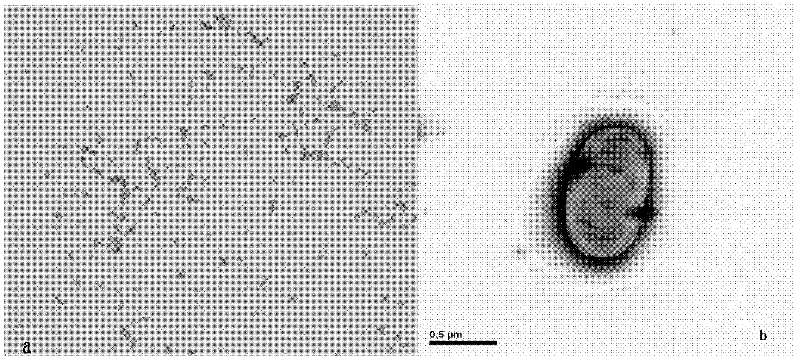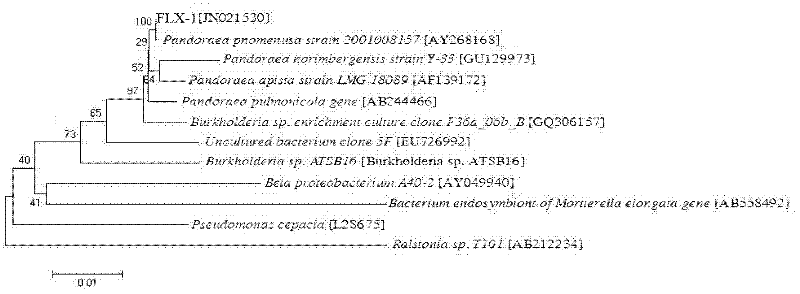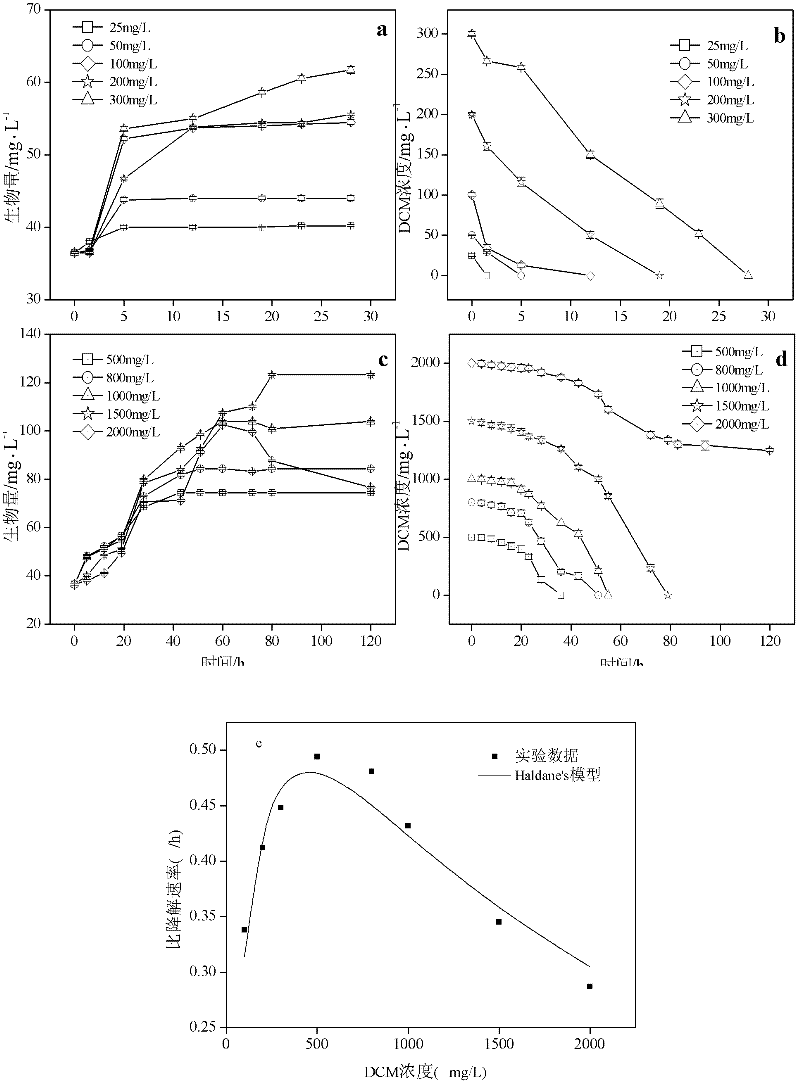Pandora bacterium with dichloromethane degrading capability and application thereof
A technology of dichloromethane and Pandora bacteria, applied in the direction of bacteria, microorganism-based methods, water/sludge/sewage treatment, etc., can solve the problems of low solubility, limited, containing, etc., and achieve the effect of broad application prospects
- Summary
- Abstract
- Description
- Claims
- Application Information
AI Technical Summary
Problems solved by technology
Method used
Image
Examples
Embodiment 1
[0024] Example 1: Isolation, purification and identification of Pandoraea pnomenusa flx-1
[0025] 1. Isolation and purification of Pandoraea pnomenusa flx-1
[0026] Pandora sp. flx-1 is a Gram-negative bacterium domesticated and isolated from the activated sludge of a refinery wastewater treatment station in Ningbo, Zhejiang. Specific steps are as follows:
[0027] Activated sludge from a wastewater treatment station of a refinery in Ningbo, Zhejiang. After washing with tap water for five times, air-expose for 48 hours to remove residual organic matter as much as possible. Prepare inorganic salt culture solution (pH7), use DCM as the only carbon source to conduct directional acclimation to activated sludge, replace fresh inorganic salt culture solution every 3 days, measure the pH of the culture solution every day, and the pH drops significantly around 40 days.
[0028] Prepare DCM initial concentration of 50mg / L inorganic salt medium, the preparation method is as follows...
Embodiment 2
[0040] Example 2: Response surface optimization of strain Pandoraeapnomenusa flx-1 (CCTCC NO: M2011242) environmental factors for degradation of DCM
[0041] 1. Response surface test design and acquisition of the prediction model for strain degradation DCM rate
[0042] The effects of three factors including culture solution pH, culture temperature and culture solution salinity on the degradation effect of DCM were investigated, and the SAS system software was used to fit the model of the DCM degradation rate obtained in the experiment, so as to obtain the predictive strain Pandoraea pnomenusa flx-1 Degradation rate of DCM under different culture conditions. The specific implementation steps are as follows:
[0043] Taking pH 7 (Code=0), temperature 30°C (Code=0), and salt concentration 0.5% (Code=0) as the central values, the SAS system software was used to carry out a three-factor and three-level experimental design (Table 2).
[0044] Table 2: Response and prediction valu...
Embodiment 3
[0053] When the pH of the culture solution was 7.3, the culture temperature was 33°C, and the salinity of the culture solution was 0.66%, the actual degradation rates of DCM by the strain Pandoraea pnomenusa flx-1 were 5.37, 5.41 and 5.42 mg / (L·h), and the average degradation rate was 5.40mg / (L·h), close to the predicted value of the model, indicating that this combination of environmental factors is the best combination of environmental factors for strain flx-1 to degrade DCM. Example 3: Detection of the degradation performance of Pandoraeapnomenusa flx-1 to different concentrations of DCM
[0054] Under the optimum environmental factor conditions (culture medium pH 7.3, culture temperature 33°C, culture medium salinity 0.66%), the degradation performance of the strain flx-1 to the initial concentration of 25-2000mg / L DCM was investigated. The results showed that the strain flx-1 could completely degrade 25-1500mg / L DCM, but only partially degrade the initial concentration of...
PUM
 Login to View More
Login to View More Abstract
Description
Claims
Application Information
 Login to View More
Login to View More - R&D
- Intellectual Property
- Life Sciences
- Materials
- Tech Scout
- Unparalleled Data Quality
- Higher Quality Content
- 60% Fewer Hallucinations
Browse by: Latest US Patents, China's latest patents, Technical Efficacy Thesaurus, Application Domain, Technology Topic, Popular Technical Reports.
© 2025 PatSnap. All rights reserved.Legal|Privacy policy|Modern Slavery Act Transparency Statement|Sitemap|About US| Contact US: help@patsnap.com



